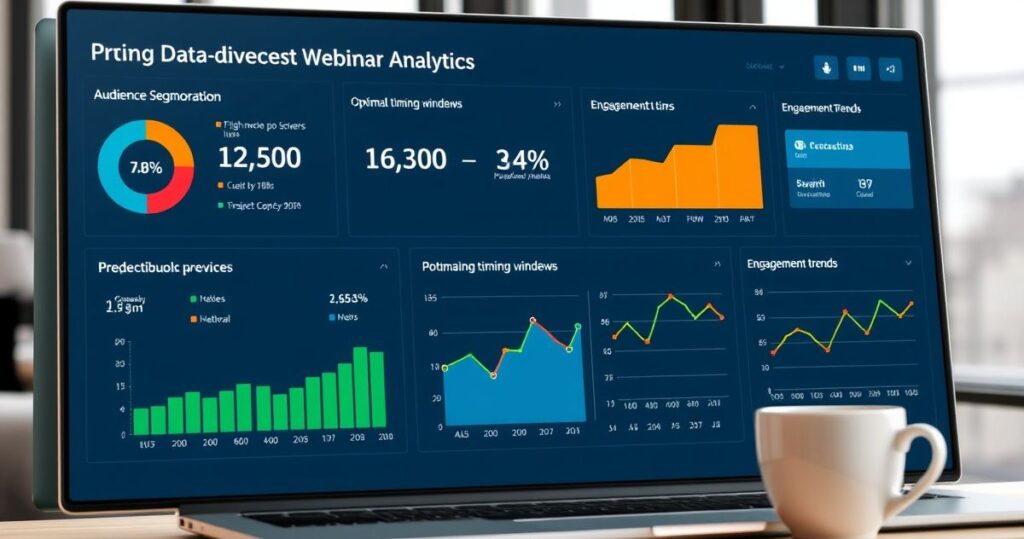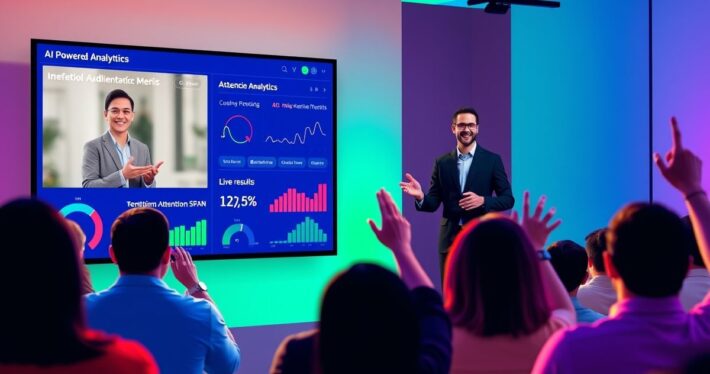How predictive analytics can improve webinar timing and reach.

How Predictive Analytics Can Improve Webinar Timing and Reach
Webinars have become a cornerstone of digital marketing strategies, but even the most well-crafted content can fall flat if delivered at the wrong time or to the wrong audience. Enter predictive analytics—a game-changer for optimizing webinar timing and reach. By leveraging data-driven insights, businesses can ensure their webinars are seen by the right people at the right time, maximizing engagement and conversions. But how exactly does predictive analytics work, and what steps can you take to implement it effectively? Let’s dive in.
What Is Predictive Analytics, and Why Does It Matter for Webinars?
Predictive analytics uses historical data, statistical algorithms, and machine learning to forecast future outcomes. For webinars, this means analyzing factors like attendee behavior, time zones, email open rates, and even content performance to predict the best timing and audience segments. Think of it as having a crystal ball that tells you when your audience is most likely to engage and what topics will resonate with them.
Now, here’s where it gets interesting: predictive analytics isn’t just about guessing—it’s about precision. By identifying patterns and trends, you can make informed decisions that drastically improve your webinar’s effectiveness. For example, if your data shows that mid-week afternoons yield the highest attendance rates, you can schedule your webinars accordingly.
How Predictive Analytics Optimizes Webinar Timing
Timing is everything when it comes to webinars. Send an invite at the wrong hour, and your audience might overlook it entirely. Here’s how predictive analytics can help you nail the perfect schedule:
-
Analyzing Historical Data
Past webinars provide a goldmine of information. Predictive analytics tools can analyze attendance rates, replay views, and even drop-off points to identify optimal scheduling windows. For instance, if your audience tends to drop off after 30 minutes, you can shorten your webinar without sacrificing value. -
Time Zone Optimization
Global audiences present a unique challenge. Predictive analytics can segment your audience by location and suggest times that work across multiple time zones. Tools like World Time Buddy integrated with your analytics can make this process seamless. -
Behavioral Patterns
When does your audience check their emails? When are they most active on social media? Predictive analytics can uncover these patterns, allowing you to send invites and reminders when they’re most likely to be seen.
Expanding Webinar Reach with Predictive Insights
Reaching the right audience is just as important as timing. Predictive analytics can help you identify high-value segments and tailor your messaging for maximum impact. Here’s how:
-
Audience Segmentation
Not all attendees are created equal. Predictive analytics can help you segment your audience based on factors like past attendance, engagement levels, and even purchase history. This allows you to craft personalized invites that resonate with each group. -
Content Relevance
What topics are your audience most interested in? Predictive analytics can analyze feedback, survey responses, and even social media interactions to identify trending topics. This ensures your webinar content aligns with your audience’s interests. -
Channel Optimization
Which platforms drive the most registrations? Predictive analytics can track performance across email, social media, and other channels to determine where to focus your efforts.
Real-World Example: How a SaaS Company Doubled Webinar Attendance
Let’s look at a real-world application. A SaaS company struggling with low webinar attendance implemented predictive analytics to optimize their strategy. By analyzing historical data, they discovered that their audience was most active mid-week between 2 PM and 4 PM EST. They also found that LinkedIn was their top-performing channel for registrations.
Using these insights, they scheduled their webinars accordingly and focused their promotional efforts on LinkedIn. The result? Attendance rates doubled, and post-webinar conversions increased by 35%.
Overcoming Challenges with Predictive Analytics
While predictive analytics offers immense potential, it’s not without its challenges. Here are some common hurdles and how to overcome them:
-
Data Quality
Garbage in, garbage out. Ensure your data is clean, accurate, and up-to-date. Regularly audit your CRM and analytics tools to maintain data integrity. -
Learning Curve
Predictive analytics tools can be complex. Invest in training for your team or consider partnering with experts to get the most out of your tools. -
Over-Reliance on Data
Data is powerful, but it’s not everything. Balance analytics with creativity and intuition to create truly compelling webinars.
Tools and Technologies to Get Started
Ready to harness the power of predictive analytics? Here are some tools to consider:
| Tool | Key Features | Best For |
|---|---|---|
| HubSpot | Audience segmentation, email analytics | CRM integration |
| Google Analytics | Behavioral tracking, channel performance | Data collection and analysis |
| Clearbit | Predictive lead scoring, audience insights | Enhanced audience targeting |
| Tableau | Data visualization, trend analysis | Visualizing predictive insights |
Final Thoughts: The Future of Webinar Optimization
As technology continues to evolve, the role of predictive analytics in webinar optimization will only grow. By leveraging data-driven insights, businesses can stay ahead of the curve, delivering webinars that resonate with their audience and drive tangible results. So, why leave your webinar success to chance? Embrace predictive analytics and watch your engagement and conversions soar.
Feature Image Description
A modern dashboard displaying predictive analytics data, including audience segmentation, optimal timing windows, and engagement trends, with a laptop and coffee cup in the foreground. The image captures the essence of data-driven webinar optimization in a professional yet approachable setting.



